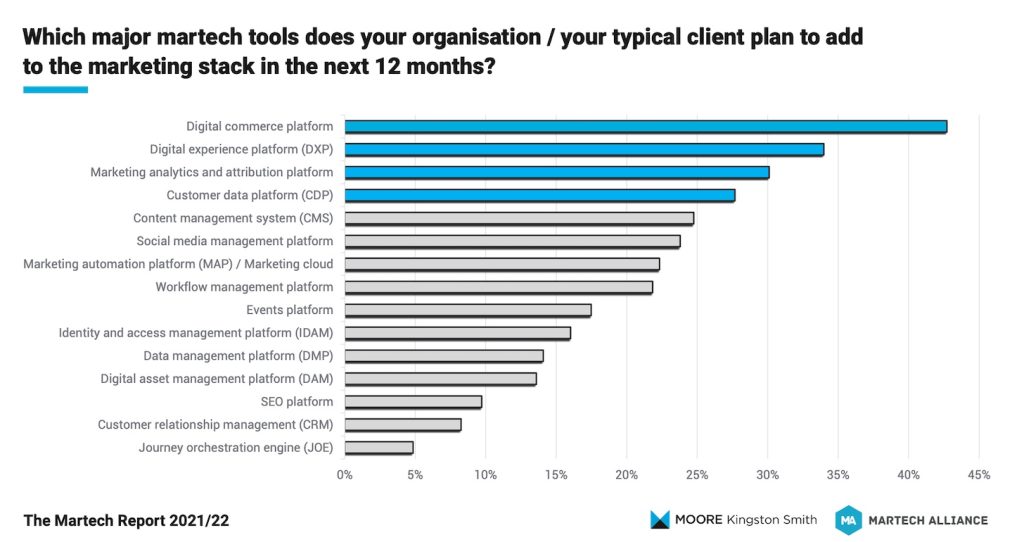I hope you’ve all had safe and pleasant holidays so far this season, and that those to come are equally happy. This will be the last issue of 2021. Our next issue will arrive January 5th, though it’s possible we’ll publish a few news items on our blog in the meantime.
This week we have content from Cassie Kozyrkov, and Scott Brinker. News comes from Adobe, MACH Alliance and Netlify and MongoDB, SnapLogic, Datadobi, and Datawords and Contentful.
Opinion / Analysis
Data, decisioning, delivery & design: A framing for the CDP vs. CDW debate
Competing and overlapping data management approaches and products complicate vertical and horizontal stack decisions, not to mention operational data control / influence, process, and budget changes. The customer data platform versus cloud data warehouse debate is especially relevant to martech stacks, but as Scott Brinker points out, also important to other domain-specific stacks. Scott zooms out and provides some really useful ways to think about the problem generally, and how to approach it.
Making friends with machine learning
This is the title of an internal full-day course created for Google employees, both technical and non-technical, recently made freely available to all. I have watched the first of the four sections and the content and delivery were spectacular. I’m looking forward to watching the rest over the holidays. Presenter Cassie Kozyrkov…
The course is designed to give you the tools you need for effective participation in machine learning for solving business problems and for being a good citizen in an increasingly AI-fueled world. MFML is perfect for all humans; it focuses on conceptual understanding (rather than the mathematical and programming details) and guides you through the ideas that form the basis of successful approaches to machine learning. It has something for everyone!
https://kozyrkov.medium.com/the-best-ai-course-youve-ever-watched-c15e0a0bbb0a
Content technology news
Adobe introduces Creative Cloud Express
A unified task-based, web and mobile product to make it easy to create and share rich multimedia content; free to start and available to all now.
https://gilbane.com/2021/12/adobe-introduces-creative-cloud-express/
MACH Alliance announces MongoDB and Netlify as members
New membership category applies to organizations that enable MACH providers to deliver a service or technology but don’t offer a direct MACH solution.
https://gilbane.com/2021/12/mach-alliance-announces-mongodb-and-netlify-as-members/
SnapLogic updates Intelligent Integration Platform
Improvements include self-service for API consumers, enhanced support for data warehouse tools, and added features for SnapLogic Flows.
https://gilbane.com/2021/12/snaplogic-updates-intelligent-integration-platform/
Datadobi launches multi-petabyte Starter Packs
The offering is purpose-built to bolster unstructured data management projects’ success in data-heavy, high-volume environments.
https://gilbane.com/2021/12/datadobi-launches-multi-petabyte-starter-packs/
Datawords partners with Contentful
To help in-house digital teams combine technology integration and cultural expertise to facilitate the work for global customers.
https://gilbane.com/2021/12/datawords-partners-with-contentful/
The Gilbane Advisor is curated by Frank Gilbane for content technology, computing, and digital experience professionals. The focus is on strategic technologies. We publish recommended articles and content technology news weekly. We do not sell or share personal data.
Subscribe | Feed | View online | Editorial policy | Privacy policy | Contact

